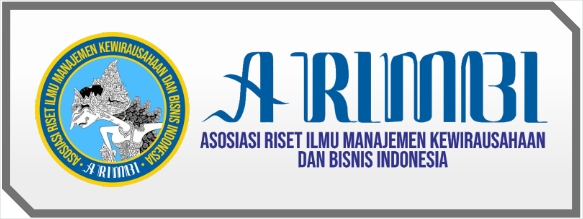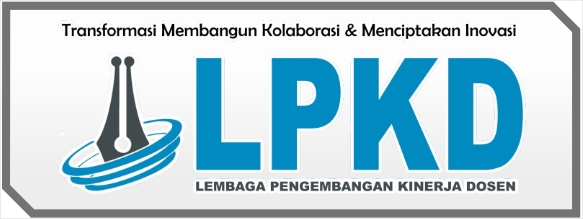Determinants of QRIS Adoption Intention for MSMEs: Identification During Covid-19
DOI:
https://doi.org/10.55606/iceb.v1i2.135Keywords:
Adoption intention, QRIS, MSMEs, digital paymentAbstract
The purpose of this study is to examine the role of product knowledge, perceived benefit, and perceived ease of use on QRIS adoption intention for MSMEs in Semarang City during the Covid-19 pandemic. An associative quantitative approach was applied in this study. Population of this research are merchants in Semarang City’s traditional market. Empirical data were collected through questionnaires from 100 respondents and analyzed with SmartPLS 3.0 based on the SEM-PLS method. The results of this study confirm that product knowledge, perceived benefit, and perceived ease of use have a significant impact on the intention to adopt QRIS. The findings encourage the government to continue to accelerate the formation of a cashless society and increase public awareness of the benefit of digital payments in preventing the spread of the virus, especially the use of QRIS.
References
Altin Gumussoy, C., Kaya, A., & Ozlu, E. (2018). Determinants of mobile banking use: an extended TAM with perceived risk, mobility access, compatibility, perceived self-efficacy and subjective norms. In Industrial Engineering in the Industry 4.0 Era (pp. 225–238). Springer.
Amalia, V., Solahudin, D., & Risdayah, E. (2020). Model Ostergaard dalam Mengkampanyekan QRCode Indonesia Standard (QRIS). Reputation: Jurnal Hubungan Masyarakat, 3(4), 312. https://doi.org/10.15575/reputation.v3i
Anggarini, D. T. (2022). Application of Quick Response Code Indonesian as a Payment Tool in Digitizing MSMEs. Sentralisasi, 11(1), 1–14. https://doi.org/10.33506/sl.v11i1.1504
Arifiyanto, M., & Kholidah, N. (2021). Analisis Pengaruh Pengetahuan Produk, Persepsi Manfaat dan Promosi terhadap Minat Penggunaan Uang Elektronik berbasis server. JMBI UNSRAT (Jurnal Ilmiah Manajemen Bisnis Dan Inovasi Universitas Sam Ratulangi)., 7(3), 697–706. https://doi.org/10.35794/jmbi.v7i3.31390
Chaveesuk, S., Khalid, B., & Chaiyasoonthorn, W. (2022). Continuance intention to use digital payments in mitigating the spread of COVID-19 virus. International Journal of Data and Network Science, 6(2), 527–536. https://doi.org/10.5267/j.ijdns.2021.12.001
Daragmeh, A., Lentner, C., & Sági, J. (2021). FinTech payments in the era of COVID-19: Factors influencing behavioral intentions of “Generation X” in Hungary to use mobile payment. Journal of Behavioral and Experimental Finance, 32, 100574. https://doi.org/10.1016/j.jbef.2021.100574
Davis, F. D. (1989). Perceived usefulness, perceived ease of use, and user acceptance of information technology. MIS Quarterly, 319–340.
Davis, F. D. (2011). Perceived Usefullnes, Perceived Ease to Use, and user Acceptance of Information Technology. Management Information Systems Research Center, 13(3), 319–340. https://doi.org/10.5962/bhl.title.33621
Ezeh, P. C., & Nwankwo, N. (2018). Factors that Influence the Acceptance of Mobile Money in Nigeria. Journal of Research in Marketing, 8(2), 684. https://doi.org/10.17722/jorm.v8i2.217
Fulshah, C., Muhamad, A., Ricardo, I., Andhika, W., & Freddy, W. (2022). Building Customer Loyalty In Digital Transaction Using QR Code: Quick Response Code Indonesian Standard (QRIS). Journal of Distribution Science, 20(1), 1–11.
Gea, D., & Al-Azhar, N. I. (2021). The Analysis of Factors Affecting Using Interest of QRIS Payment Systems on E-wallet Applications in Indonesia. 2021 International Conference on Information Management and Technology (ICIMTech), 1, 111–115.
Ghozali, I. (2014). Structural Equation Modeling: Metode Alternatif dengan Partial Least Squares (PLS). Semarang: Universitas Diponegoro.
Han, D., & Vanomy, A. E. (2022). Analisis faktor-faktor yang mempengaruhi intensi implementasi e-money dalam transaksi usaha pada pedagang asongan untuk meningkatkan cashless society di batam. Jurnal Administrasi Bisnis, 16(2), 158–173.
Hu, Z., Ding, S., Li, S., Chen, L., & Yang, S. (2019). Adoption intention of fintech services for bank users: An empirical examination with an extended technology acceptance model. Symmetry, 11(3). https://doi.org/10.3390/sym11030340
Kasilingam, D. L. (2020). Understanding the attitude and intention to use smartphone chatbots for shopping. Technology in Society, 62(May), 101280. https://doi.org/10.1016/j.techsoc.2020.101280
Martens, M., Roll, O., & Elliott, R. (2017). Testing the Technology Readiness and Acceptance Model for Mobile Payments Across Germany and South Africa. International Journal of Innovation and Technology Management, 14(6). https://doi.org/10.1142/S021987701750033X
Ming, K. L. Y., & Jais, M. (2022). Factors Affecting the Intention to Use E-Wallets During the COVID-19 Pandemic. Gadjah Mada International Journal of Business, 24(1), 82–100. https://doi.org/10.22146/gamaijb.64708
Muñoz-Leiva, F., Climent-Climent, S., & Liébana-Cabanillas, F. (2017). Determinantes de la intención de uso de las aplicaciones de banca para móviles: una extensión del modelo TAM clásico. Spanish Journal of Marketing - ESIC, 21(1), 25–38. https://doi.org/10.1016/j.sjme.2016.12.001
Patel, K. J., & Patel, H. J. (2018). Adoption of internet banking services in Gujarat: An extension of TAM with perceived security and social influence. International Journal of Bank Marketing, 36(1), 147–169. https://doi.org/10.1108/IJBM-08-2016-0104
Pillai, R., Sivathanu, B., & Dwivedi, Y. K. (2020). Shopping intention at AI-powered automated retail stores (AIPARS). Journal of Retailing and Consumer Services, 57(May), 102207. https://doi.org/10.1016/j.jretconser.2020.102207
Sari, M. A., Aminah, I., & Redyanita, H. (2021). Preferensi Generasi Millenial Dalam Memilih Pembayaran Digital (Studi Kasus Pada Mahasiswa Politeknik Negeri Jakarta Depok). Ekonomi & Bisnis, 19(2), 97–106. https://doi.org/10.32722/eb.v19i2.3601
Shemesh, T., & Barnoy, S. (2020). Assessment of the intention to use mobile health applications using a technology acceptance model in an israeli adult population. Telemedicine and E-Health, 26(9), 1141–1149. https://doi.org/10.1089/tmj.2019.0144
Singh, A. K., & Sharma, P. (2022). A study of Indian Gen X and Millennials consumers’ intention to use FinTech payment services during COVID-19 pandemic. Journal of Modelling in Management, ahead-of-print.
Singh, S., & Srivastava, R. K. (2020). Understanding the intention to use mobile banking by existing online banking customers: an empirical study. Journal of Financial Services Marketing, 25(3–4), 86–96. https://doi.org/10.1057/s41264-020-00074-w
To, A. T., & Trinh, T. H. M. (2021). Understanding behavioral intention to use mobile wallets in vietnam: Extending the tam model with trust and enjoyment. Cogent Business and Management, 8(1). https://doi.org/10.1080/23311975.2021.1891661
Venkatesh, V., & Davis, F. D. (2000). Theoretical extension of the Technology Acceptance Model: Four longitudinal field studies. Management Science, 46(2), 186–204. https://doi.org/10.1287/mnsc.46.2.186.11926
Yan, C., Siddik, A. B., Akter, N., & Dong, Q. (2021). Factors influencing the adoption intention of using mobile financial service during the COVID-19 pandemic: the role of FinTech. Environmental Science and Pollution Research, 0123456789. https://doi.org/10.1007/s11356-021-17437-y
















